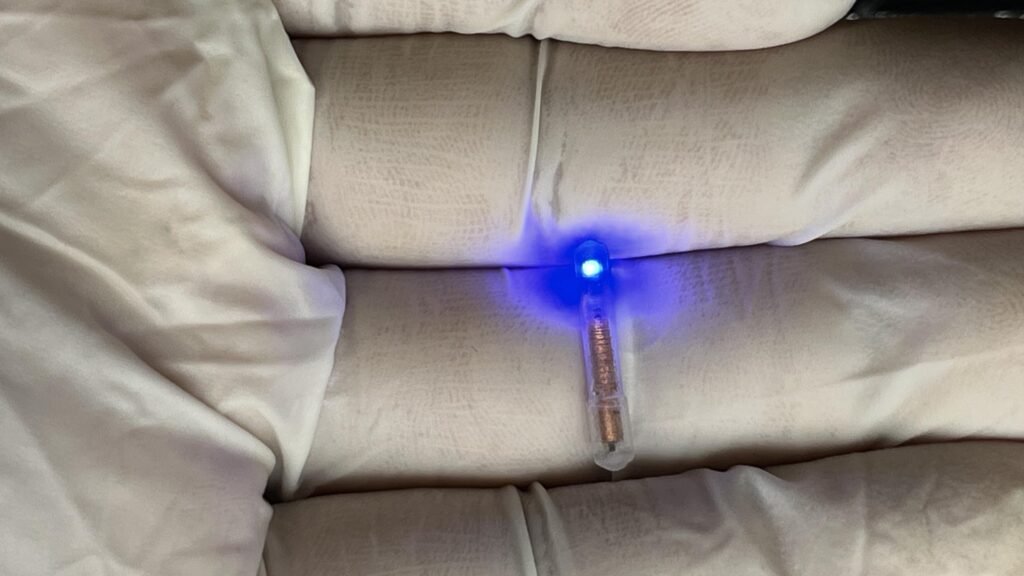Researchers at NYU Tandon School of Engineering have developed a groundbreaking ingestible device that uses light to activate specific neurons in the gut—offering a noninvasive way to study and potentially treat digestive and metabolic disorders. The technology, called ICOPS (Ingestible Controlled Optogenetic Stimulation), represents the first wireless, battery-free platform for optogenetic stimulation of the gastrointestinal tract.
The gut is often referred to as the body’s “second brain” due to its vast network of neurons known as the enteric nervous system. However, studying this system has been notoriously difficult. Traditional methods require invasive surgeries to implant optical fibers, limiting researchers’ ability to observe natural gut function. ICOPS changes that by allowing scientists to stimulate light-sensitive neurons simply by having subjects swallow a capsule.
Here’s how it works: first, specific gut neurons are genetically modified to respond to light—a technique known as optogenetics. Then, the subject swallows the ICOPS capsule, which contains micro-LEDs and custom coils. Once inside the body, the capsule receives power wirelessly via magnetic induction from an external transmitter. This battery-free design keeps the device small enough for use in animal models like rats, and eventually, it could be scaled for human use.
The capsule can precisely illuminate targeted regions of the gut, enabling researchers to map neural circuits and observe how they influence digestion, hormone release, and metabolic regulation. This opens new possibilities for treating conditions like gastroparesis (delayed stomach emptying), eating disorders, and diabetes—where gut-brain signaling plays a key role.
ICOPS builds on previous ingestible technologies developed by lead researcher Khalil Ramadi, including FLASH (electrical stimulation) and IMAG (magnetic tracking). While those devices demonstrated that gut neuron activation can influence metabolism, ICOPS adds optogenetic precision, allowing for more targeted and repeatable interventions.
The capsule was fabricated entirely in-house using 3D printing, eliminating the need for cleanroom facilities and enabling scalable production. It operates wirelessly in freely moving animals, making it ideal for long-term studies without the constraints of tethered setups.
Beyond research, the technology could lead to new classes of gut-targeted therapies. Current drugs that affect gut motility tend to act broadly, either speeding up or slowing down digestion without specificity. ICOPS could enable region-specific neural activation, offering more refined control over gastrointestinal function.
Article from NYU: Light pills could transform understanding of how the gut controls the body
Abstract in Advanced Materials Technologies: Wirelessly Powered Ingestible Capsule for Optical Stimulation of the Gastrointestinal Tract in Rodents

